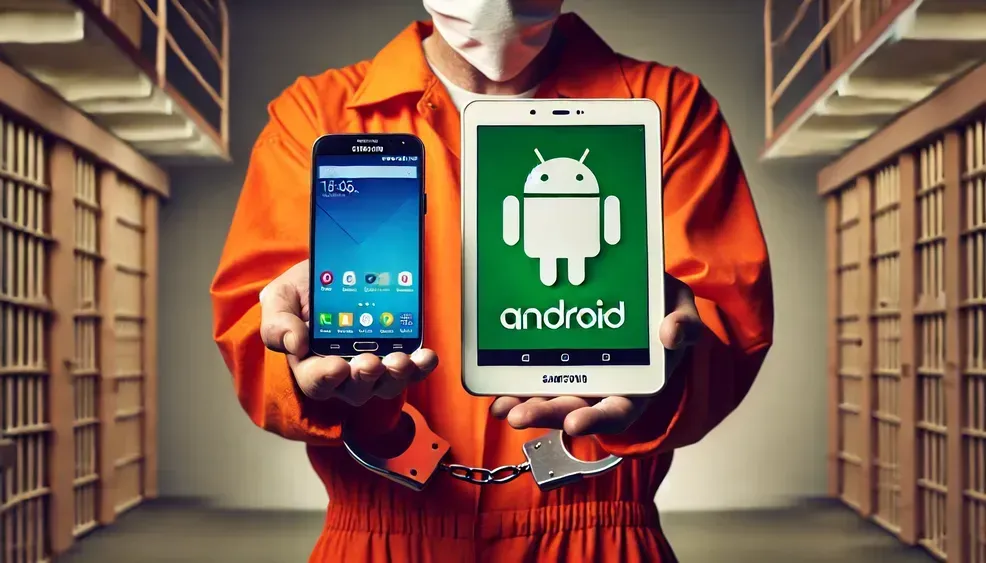Why Mobile Phone Possession Should Be Reclassified as a Moderate Severity Offense
The Federal Bureau of Prisons (BOP) currently categorizes inmate possession of mobile phones as a "Greatest Severity" offense under Incident Code 108, placing it alongside truly dangerous contraband like weapons and escape tools. This classification comes with severe penalties, including a 10-year mark on an inmate’s record, restrictions on rehabilitative programs, and potentially prolonged incarceration. However, as technology evolves and prison policies around the world adapt to new realities, it’s clear that the BOP’s rigid stance on mobile phones is outdated, counterproductive, and in urgent need of revision. Rather than treating phone possession as a major security breach, BOP should adopt a more nuanced approach, reclassifying it as a "Moderate Severity" offense—akin to circumvention of monitoring policies—so that penalties are proportionate to the actual risks involved.
A Flawed Classification: Are Mobile Phones Really “Hazardous Tools”?
BOP policy defines a hazardous tool as something that could aid in escape or pose a serious security threat. Yet, when we compare mobile phones to the WiFi-enabled tablets that BOP already permits within facilities, the distinction becomes blurred. The only real difference between a contraband phone and an authorized BOP tablet is the ability to make unmonitored calls. But inmates in many minimum and low-security facilities already have access to relatively unmonitored communication methods, such as outgoing mail. In fact, the act of circumventing monitoring is already classified under a lesser, 200-series offense. This raises an important question: why is possessing a phone penalized more severely than the actual act of bypassing BOP surveillance?
Lasting Consequences: How a 100-Series Incident Report Derails Rehabilitation
The classification of phone possession as a "Greatest Severity" offense comes with lasting consequences. A 100-series incident report stays on an inmate’s record for a decade, influencing their custody classification and limiting access to educational, vocational, and rehabilitative programs. This punitive approach runs counter to the goal of reducing recidivism. By blocking inmates from programs that help them successfully reintegrate into society, BOP’s policies contribute to longer incarceration times and missed opportunities for rehabilitation.
International Precedents: A Smarter Approach to Prison Technology
The United States lags behind other nations in recognizing the potential benefits of controlled access to technology for incarcerated individuals. In some European prison systems, mobile phones and even laptops are legally available for purchase by inmates. The United Nations has even declared internet access a human right, and many countries have reformed prison policies accordingly. By contrast, BOP’s outdated classification of mobile phones reflects a refusal to acknowledge both global trends and the practical realities of modern incarceration.
Staff Acknowledgment and Policy Inconsistencies
Contraband cell phones are ubiquitous in federal prisons, with an estimated 20,000 seized annually. The sheer prevalence suggests that neither staff nor inmates genuinely view phone possession as a severe security breach. Moreover, BOP’s chronic understaffing and systemic corruption issues have led to arbitrary enforcement of Code 108, making its application inconsistent and unfair. With such widespread noncompliance, it’s worth asking whether the policy itself is the problem.
BOP Tablets vs. Mobile Phones: The Arbitrary Divide
BOP currently allows inmates to purchase and use WiFi-enabled Android tablets for entertainment, education, and communication. The only difference between these devices and a mobile phone is GSM network capability. If security concerns stem from unmonitored calls, then why not regulate phone access rather than impose extreme penalties for possession? Moreover, BOP already classifies "circumventing monitoring" as a moderate, 200-series offense. Given that the primary justification for banning mobile phones is their ability to bypass monitoring, logic dictates that possession of such a device should fall under the same classification.
Communication Barriers: A Necessity, Not a Luxury
As of 2025, BOP no longer provides randomly monitored landline calls free of charge. With a limited number of communal prison phones—sometimes just a few per 120 inmates—access to legal and family communication is often severely restricted. The inability to maintain meaningful contact with loved ones has real consequences. Studies show that strong family ties reduce recidivism and improve post-release outcomes. If the system fails to provide adequate communication channels, inmates will inevitably seek alternatives, including contraband phones.
The Case for Reclassification: Phones as a Tool for Rehabilitation
Unlike BOP-issued tablets, which offer little in the way of substantial educational resources, mobile phones provide access to self-improvement opportunities. Many inmates use phones to complete online coursework, access legal research, and stay in touch with potential employers—critical steps toward successful reintegration. Banning mobile phones doesn’t prevent their use; it merely drives up their black-market value and fuels corruption among prison staff. Instead of enforcing an impractical zero-tolerance policy, BOP should consider a regulated system for controlled phone access that balances security with rehabilitation.
Policy Proposal: A Rational and Fair Approach
Given the realities outlined above, we urge the BOP to: 1. Reclassify mobile phone possession as a 200-series Moderate Severity offense, aligning it with the already-existing category of "Circumventing Monitoring." 2. Acknowledge that the primary distinction between BOP tablets and contraband phones is GSM communication, which can be regulated rather than strictly prohibited. 3. Recognize that BOP staff already selectively enforce Code 108, further demonstrating its impracticality. 4. Consider global prison policies that allow for controlled mobile phone use as a means of rehabilitation. 5. Prioritize inmate education, communication, and reintegration efforts, which research shows are key factors in reducing recidivism.
Conclusion: A Sensible Reform for a Broken System
The BOP’s current approach to mobile phones is neither practical nor aligned with modern correctional best practices. By reclassifying phone possession as a moderate offense, the BOP can maintain security while removing unnecessary barriers to rehabilitation. Prison reform is about more than punishment—it’s about creating pathways to successful reintegration. A policy shift on mobile phones isn’t just a step in the right direction; it’s an essential move toward a more just and effective correctional system.
